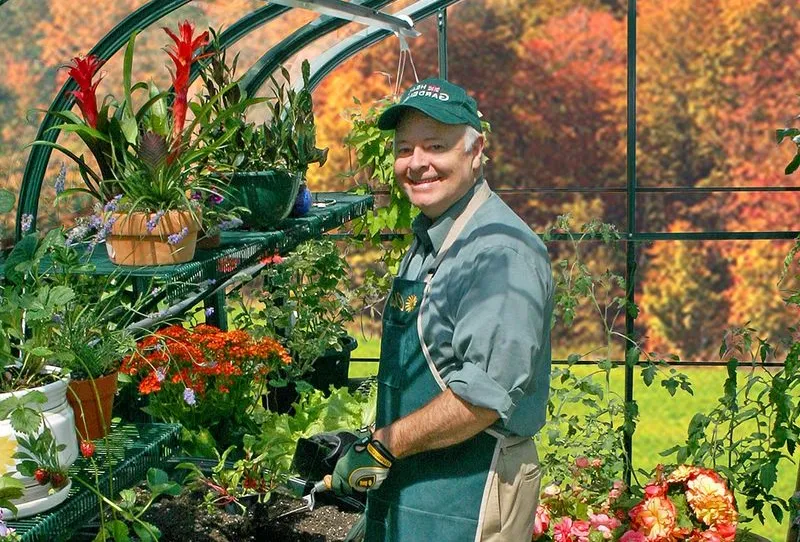How to Prepare Your Greenhouse for Winter
Get ready to turn your greenhouse into a winter wonderland for your plants! Our detailed guide is packed with essential tips and strategies to help your plants not only survive the chilly months but thrive in them.
Discover the steps to fortify, insulate, and prepare your greenhouse for the winter season. Transform your greenhouse into a cozy sanctuary, providing your plants with a warm and protected environment throughout the colder months.
Inspect and Clean the Greenhouse
Give your greenhouse a thorough inspection and cleaning before winter arrives. This step helps identify and fix potential issues that could affect your plants’ health and the greenhouse’s efficiency during the colder months.
-
Detailed inspection. Start with a thorough examination of the structure. Look for cracks in the glass or plastic, check seals around windows and doors, and ensure the roof and foundation are intact. Repair any damage immediately to prevent heat loss and protect against harsh weather.
-
Comprehensive cleaning. Clean both the interior and exterior of your greenhouse. Remove all plant debris, spent soil, and other waste that might harbor pests or diseases. Wash the glass or plastic panels with mild soap and water to ensure maximum light penetration, which is essential for the shorter days of winter. Disinfect surfaces, including workbenches and tools, to reduce the risk of disease.
-
Gutter and drainage check. Clean and clear gutters and drainage systems to prevent water accumulation and protect against mold growth or moisture damage.
Temperature Control and Insulation
Maintaining an optimal temperature inside your greenhouse is key to protecting your plants during winter. Here’s how to effectively manage temperature control and insulation:
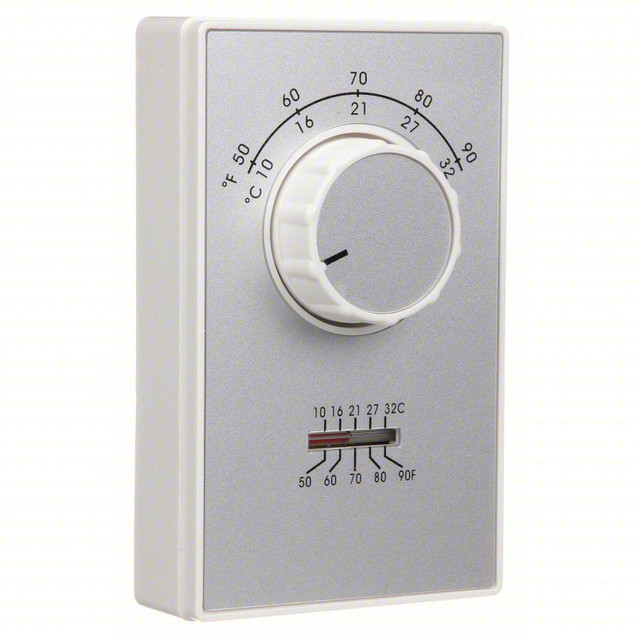
-
Install a thermostat. A greenhouse thermostat will help you maintain a consistent and appropriate temperature for your plants. Choose a thermostat designed for greenhouse environments for accurate temperature control.
The Wall Thermostat from Charley’s Greenhouse & Garden offers precise temperature control for greenhouses and is compatible with fans and vents. It operates within 40°-90°F, featuring a rugged, moisture-resistant design, and is suitable for hard-wired setups, supporting both cooling and heating modes. UL Listed and CSA Certified, it’s designed for durability and efficiency.
- Effective insulation methods. Insulating your greenhouse is vital for retaining heat. Using nylon bubble wrap on the interior surfaces, especially the roof and north-facing sides, is an excellent way to keep the warmth in. This not only helps maintain a stable temperature but also reduces heating costs.
Make the most of the winter sun with Reflectix Insulation to enhance greenhouse efficiency by reducing heat loss and amplifying light. It mitigates radiant, conductive, convective, and infiltration heat loss while boosting light reflection. Composed of poly-bubbles and foil, it’s durable yet easy to install and ideal for single-glass greenhouses.
-
Seal gaps and leaks. Check for and seal any gaps or leaks in the greenhouse structure. Even small openings can lead to heat loss. Use weather stripping or caulking to seal these areas effectively.
-
Consider thermal mass. Using materials that absorb heat during the day and release it at night can help regulate the greenhouse temperature. Water barrels or stones can serve as thermal mass, reducing the need for additional heating.
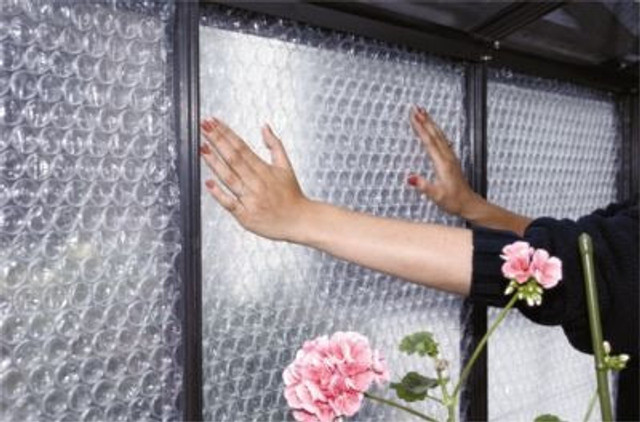
Lighting and Plant Consideration
As winter approaches, the reduced daylight hours and intensity of sunlight can affect plant growth in your greenhouse. Here’s how to address lighting and plant considerations for the winter months:
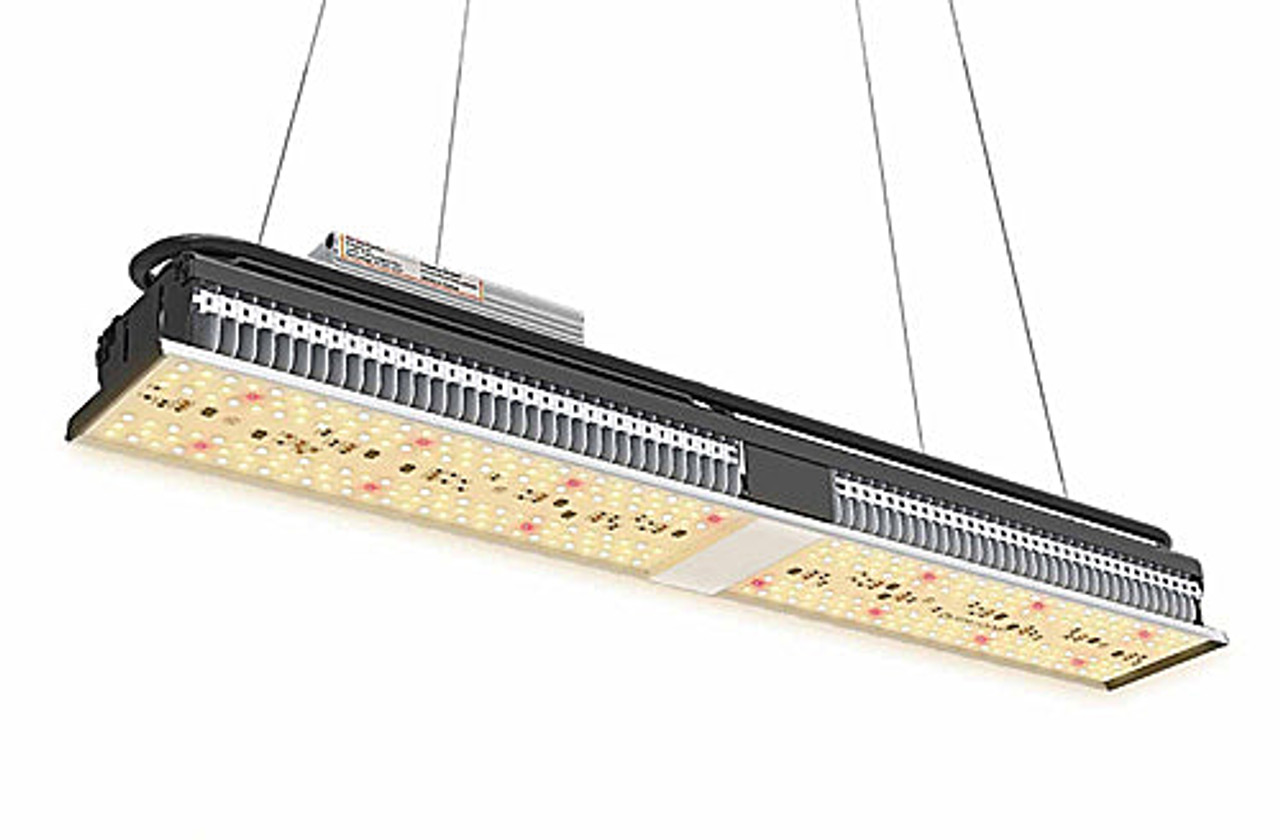
-
Supplemental Lighting. Consider installing supplemental grow lights to compensate for the shorter and often gloomier days. These lights can provide the necessary light for photosynthesis, ensuring your plants continue to thrive.
The Mars Hydro SP-150 LED Grow Light, with its 150W power and full spectrum, is ideal for home gardening. It’s especially effective for vegetables and succulents, offering optimal blue spectra. With its compact design, it fits easily on tables, in cabinets, or as a corner light in your greenhouse. Its efficient heat sink ensures low heat output, perfect for small spaces.
-
Choosing the right lights. Select grow lights that suit your greenhouse size and the types of plants you are growing. LED lights are energy-efficient and emit less heat, making them a good choice for enclosed spaces.
The Sunblaster LED Grow Light is a high-output strip light, perfect for plant propagation, germination, and nurturing seedlings. Its 6400K full spectrum light ensures optimal growth, while the self-ballasted, easy-to-install design allows for wide 120° light distribution. It features a 5.5 ft power cord with an ON/OFF switch, enabling you to link up to eight units together.
-
Strategic placement. Position the lights strategically to cover all areas of your greenhouse. Ensure that all plants receive adequate light, especially those known to require more sunlight, like zucchini, tomatoes, and beans.
-
Adapting plant choices. In winter, it may be beneficial to grow plants that are more tolerant of lower light conditions, such as arugula, beets, and broccoli. Consider adjusting your plant selection to include varieties that thrive in cooler and less bright environments.
-
Adjusting plant layout. Rearrange your plants to ensure they receive optimal light exposure. Taller plants, like peppers, eggplants, or citrus trees should be placed where they won’t cast shadows on smaller ones, like leafy salad greens and herbs like basil, cilantro, or mint. You should also ensure that all plants are accessible for care and maintenance.

Watering and Humidity Management
Proper watering and humidity management are crucial for maintaining a healthy greenhouse environment during the winter. Here’s how to approach these tasks:
-
Reduced watering needs: In winter, plants grow slower and require less water. Overwatering can lead to issues like root rot or fungal growth. Monitor the soil moisture closely and water only when necessary.
-
Watering technique: When watering, do it during the day so that the water has time to absorb and excess can evaporate. This reduces the risk of cold damage at night. Also, water at the base of the plants to avoid wetting the foliage, which can lead to disease.
-
Humidity levels. Proper humidity is important, especially in a heated greenhouse where the air can dry. Use a hygrometer to monitor humidity levels; ideal humidity is around 70-80%, any higher, and you increase the risk of disease. Aim for a balance – too much humidity can encourage mold and mildew, while too little can stress plants.
-
Humidity control methods: Use humidifiers or place water trays near your heating system to increase humidity. To reduce humidity, improve ventilation, and ensure your greenhouse has adequate air circulation.
Charley’s Humidity System with Humidistat effectively maintains optimal moisture levels in greenhouses, countering the drying effects of ventilation and heating. This automated system includes 10 misting nozzles, a humidistat, and essential components for installation. Ideal for greenhouses up to 12' x 16', it can output up to 20 gallons per hour and operates efficiently across a wide range of water pressures.
Ventilation and Air Circulation
Adequate ventilation and air circulation are vital in maintaining a healthy greenhouse environment, especially during winter. Here are the steps to ensure proper airflow:
-
Regular ventilation. It’s important to ventilate your greenhouse regularly, even in winter. This helps prevent issues like mold, mildew, and fungal infections in plants. On milder days, open vents or doors briefly to allow fresh air in and stale air out.
-
Controlled venting. When ventilating in winter, do it strategically to avoid significant temperature drops. A few minutes per day can be sufficient. Ensure that you close everything securely afterward to retain heat.
-
Air circulation fans. Install fans to help circulate air within the greenhouse. Good air circulation ensures even heat distribution and prevents cold spots, protecting your plants from frost damage.
The Clip-On Fan offers portable air circulation for greenhouses, easily attaching to the framework. Its quiet, 2-speed operation efficiently circulates air, with a 6" blade delivering up to 190 cfm. The adjustable head ensures targeted airflow. Energy-efficient, it uses only 37 watts and includes a 6 ft. power cord.
-
Positioning of fans. Place the fans so air moves over the plant canopy and throughout the entire space. Avoid directing airflow directly at plants to prevent windburn.
-
Balancing temperature and airflow: Maintaining the right temperature while ensuring adequate air circulation is a delicate balance. Regularly check the temperature and humidity levels and adjust your ventilation accordingly.

Pest and Disease Prevention
Winter can bring unique challenges in managing pests and diseases in your greenhouse. Here are some strategies to keep your plants healthy:
-
Regular inspections. Consistently inspect your plants for signs of pests or diseases. Early detection is key to preventing infestations or outbreaks. Look for common indicators like discoloration, spots on leaves, or visible insects.
-
Hygiene practices. Maintain good hygiene to effectively prevent pests and diseases. Remove any dead or diseased plant material promptly and avoid leaving debris on the floor or surfaces, as it can harbor pests and diseases.
-
Natural pest control. If pests are detected, consider using natural predators or organic insecticides. Introducing beneficial insects like ladybugs or using neem oil can effectively control pests without harming your plants.
-
Disease management. If you detect plant diseases, isolate affected plants immediately to prevent spread. Use organic fungicides when necessary, and always follow the manufacturer’s instructions.
-
Avoid overcrowding. Give your plants enough space for air circulation. Overcrowding can create a humid environment favorable for pests and diseases.
Heating Solutions
Ensuring your greenhouse remains warm enough during winter is vital for plant health. Here are some effective heating solutions to consider:
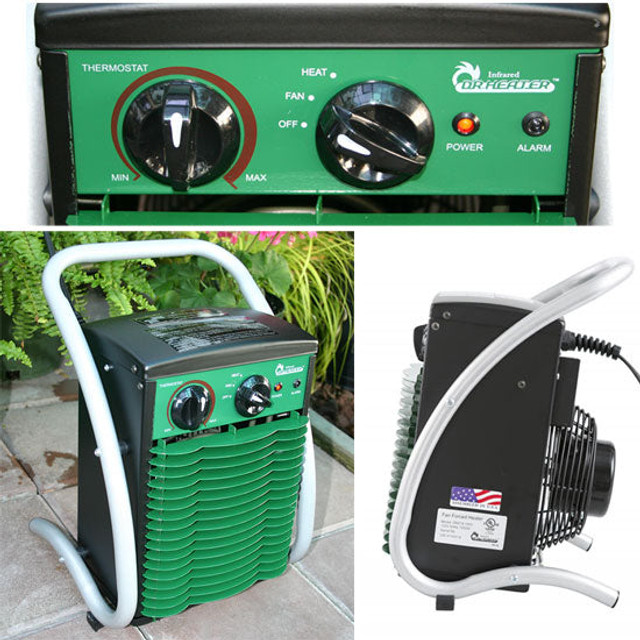
-
Choose the right heater. Select a heater based on your greenhouse size and heating needs. Options include electric, gas, and paraffin heaters. Each type has advantages, so choose one that best fits your greenhouse environment.
Charley’s 120-Volt Greenhouse Heater features accurate temperature control with an exterior sensor, a heavy-duty design with a thick coil heating element and powder-coated steel cabinet, and a moisture-resistant, enclosed fan motor. This heater has a high-capacity fan, a wide temperature range, and multiple control settings, including a safety thermal reset.
-
Safe installation and usage. Install your heater following the manufacturer’s guidelines, ensuring it’s placed away from flammable materials. Always prioritize safety and ensure adequate ventilation to prevent the buildup of harmful gases.
-
Thermostat control. Using a thermostat with your heater helps maintain a consistent temperature. A thermostat can also help reduce energy costs by ensuring the heater only runs when necessary.
The Greenhouse Thermostat efficiently controls fans or heaters, featuring a moisture-resistant case ideal for humid environments. Its external stainless steel sensor ensures accurate, rapid temperature response. With a clear, large dial and a 40° to 100° F range, it supports up to 1500 watts and 14 amps at 120 volts.
-
Use heat mats. Consider using heat mats for smaller areas, such as seedling trays. These provide direct warmth to the roots, promoting healthy growth.
The Mega Size Commercial Seedling Heat Mat can promote germination and rooting during the winter with consistent bottom heat. It’s large enough to warm hundreds of seedlings or cuttings, raising the root area’s temperature by 10-20°F. Measuring 60" x 21", it fits six standard flats, features a 6 ft. power cord, and operates at 180 watts, 120 volts. It also comes with a 3-year manufacturer warranty.
-
Insulation synergy. Combine heating solutions with good insulation. This synergy is more energy-efficient, reducing the heat lost and the workload on your heating system.
Preparing Plants for Winter
Preparing your plants for winter is critical in ensuring their survival and continued growth during the colder months. Here’s how to prepare your plants for the winter season in your greenhouse:
-
Gradual acclimatization. Start by gradually acclimating your plants to cooler temperatures. This process, known as hardening off, helps reduce shock from sudden temperature changes and strengthens the plants’ resilience to cold.
-
Select cold-tolerant varieties: If you plan to introduce new plants, opt for varieties known for their cold tolerance, like peonies, iris, and coneflowers. These plants are more likely to thrive in the lower temperatures of winter.
-
Pruning and trimming: Prune dead or unnecessary growth from your plants. This helps the plants focus their energy on healthy growth and reduces hiding spots for pests.
-
Adjust feeding schedules: As plant growth generally slows in winter, reduce the frequency and amount of fertilizer. Over-fertilizing can harm plants that are not in active growth.
Set Your Greenhouse Up for Winter Success
Preparing your greenhouse for winter involves careful planning and attention to detail. It encompasses a variety of essential activities, from a thorough cleaning and inspection of the structure to fine-tuning temperature, lighting, watering, and pest control.
Each of these steps is integral to creating an environment that supports the survival and growth of your plants through the colder months. By diligently implementing these measures, you safeguard your plants and lay a solid foundation for a thriving and prosperous spring.
Consider this preparation as a valuable investment in maintaining your greenhouse’s vitality and productivity, ensuring it remains a flourishing sanctuary throughout the year.
Explore the range of greenhouse equipment and accessories online at Charley’s Greenhouse & Garden. We carry an extensive selection of products, from insulation to humidifiers to heaters and fans to help you prepare your greenhouse for winter and create the optimal climate to help your plants thrive.


